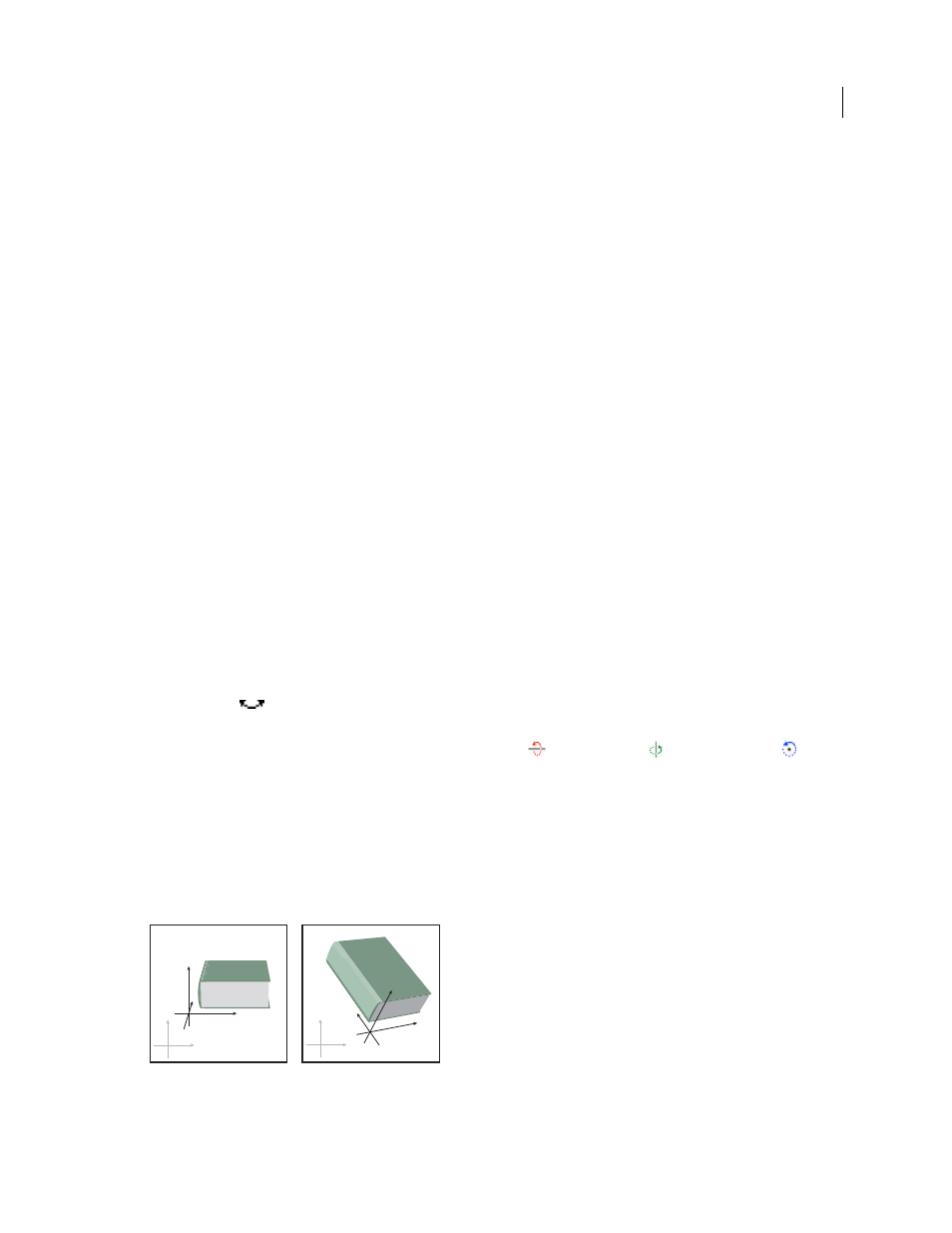Set 3d rotation position options, Set 3d rotation position, Options – Adobe Illustrator CS4 User Manual
Page 258

251
USING ADOBE ILLUSTRATOR CS4
Reshaping objects
2
Choose Effect > 3D
> Revolve.
3
Select Preview to preview the effect in the document window.
4
Click More Options to view the complete list of options, or Fewer Options to hide the extra options.
Position
Sets how the object is rotated and the perspective from which you view it. (See “
Revolve
Determines how to sweep the path around the object to turn it into three dimensions. (See “
Surface
Creates a wide variety of surfaces, from dull and unshaded matte surfaces to glossy and highlighted surfaces
that look like plastic. (See “
Lighting
Adds one or more lights, varies the light intensity, changes the object’s shading color, and moves lights
around the object, for dramatic effects. (See “
Map
Maps artwork onto the surfaces of a 3D object. (See “
5
Click
OK.
Set 3D rotation position options
❖
Do any of the following:
•
Choose a preset position from the Position menu.
•
For unconstrained rotation, drag a track cube face. The front of the object is represented by the track cube’s blue
face, the object’s top and bottom faces are light gray, the sides are medium gray, and the back face is dark gray.
•
To constrain the rotation along a global axis, hold down Shift while dragging horizontally (global y axis) or vertically
(global x axis). To rotate the object around the global z axis, drag in the blue band that surrounds the track cube.
•
To constrain the rotation around an object axis, drag an edge on the track cube. The pointer changes to a double-
sided arrow
, and the cube edge changes color to identify the axis around which the object will rotate. Red edges
represent the object’s x axis, green edges represent the object’s y axis, and blue edges represent the object’s z axis.
•
Enter values between –180 and 180 in the horizontal (x) axis
, vertical (y) axis
, and depth (z) axis
text
boxes.
•
To adjust the perspective, enter a value between 0 and 160 in the Perspective text box. A smaller angle is similar to
a telephoto camera lens; a larger lens angle is similar to a wide-angle camera
lens.
Note: A lens angle that is higher than 150 may result in objects extending beyond your point of view and appearing
distorted. Also, keep in mind that there are object x, y, and z axes and global x, y, and z axes. Object axes remain relative
to an object’s position in its 3D space. Global axes remain fixed relative to the computer screen; the x axis lies horizontally,
the y axis lies vertically, and the z axis lies perpendicular to the computer screen.
Object axes (in black) move with the object; global axes (in gray) are fixed.
y
x
y
x
y
z
x
y
z
x